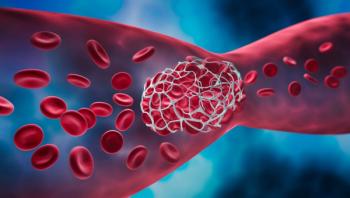
New Line of Gene Therapy Vectors Better at Targeting Liver Cells in Hemophilia B
German researchers developed a modified adeno-associated virus capsid that has greater affinity for liver cells.
Most emerging gene therapies for hemophilia B use adeno-associated virus (AAV) vectors to deliver genetic material into target liver cells. AAV vectors are made up of a protein capsid that wraps around a DNA genome. With hemophilia B gene therapy, the genome contains genetic instructions for the production of factor IX, which is the missing clotting factor in hemophilia B. When the capsid binds to a liver cell, the genetic material is uncoated and released into the cell. Liver cells are the target for hemophilia gene therapy because they are the primary site for blood clotting factor production.
In some cases, certain patient factors, such as blood proteins or neutralizing antibodies, can interact with the capsid and interfere with its ability to convert target cells. Viral vectors may also target other cells in addition to liver cells and release their genetic load in the wrong place. Because of this, researchers continue to tweak viral vectors in an effort to improve efficiency in converting target cells and minimize the loss of vector carriers through deviation into off-target areas.
In a study published in August 2022 in the journal
When tested in a mouse model of hemophilia B, results showed that MLIV.K and MLIV.A were up to four times better at restoring factor IX activity than the AAV2 vector. The same results were observed in experiments using human liver cells.
Lead author Nadja Meumann, Ph.D., from Hannover Medical School, said in a press release, “In our work, we looked for AAV variants that, on the one hand, target the liver precisely and do not stray into other tissues and, on the other hand, escape the neutralizing antibodies,”
Although more research is needed before applying the study findings in humans, Meumann and colleagues note that these new vector variants may help overcome challenges with neutralizing antibodies toward AAV vectors. Additionally, a more robust factor IX response could allow for reduced dosing in clinical settings, which may lower the cost of an already ultra-expensive therapy.
Newsletter
Get the latest industry news, event updates, and more from Managed healthcare Executive.

















































